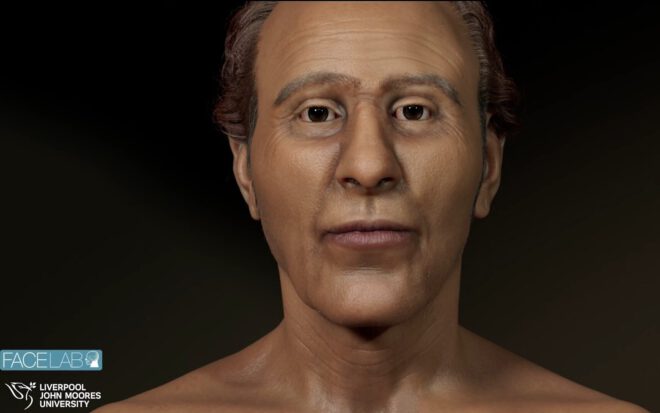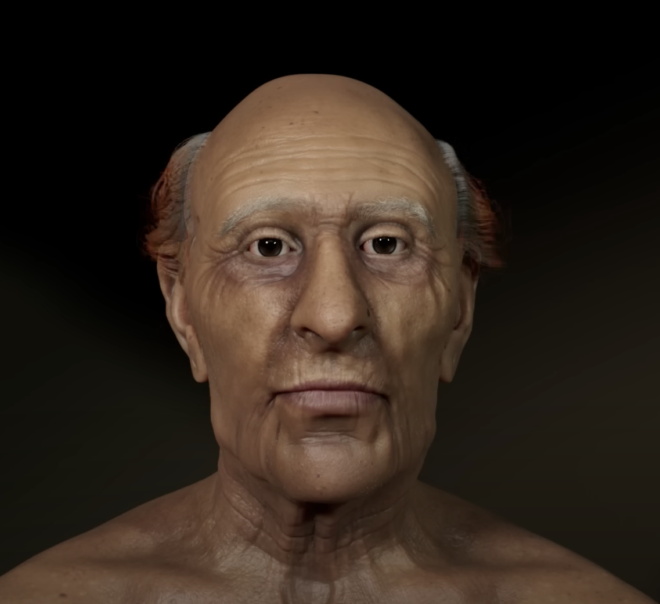
CT scans help researchers “unwrap” the face of Ramses II without disturbing the mummy in any way. This is his face at 45. He was the man who met Moses.
It’s a mystery waiting to be “unwrapped”: what did Egypt‘s most powerful ruler, Ramses II look like? Removing the mummy cloth would disturb the remains but new technology using CT gives us an accurate look under the cloth. We’ve revealed the selfie of Jesus. Now it’s time for Ramses II.
The images were revealed by the Face Lab from the University of Liverpool, UK in conjunction with Egyptologists. Using scans, the team led by Professor Caroline Wilkinson and the University of Cairo reconstructed how the Pharaoh would have looked at 45 and at the age of his death at 90 using state-of-the-art techniques.
Ramses II was arguably the greatest and most powerful Egyptian king of the during the New Kingdom period and lived from 1303 -1213 BCE. He is interested for major world religions as he was in power during the biblical Book of Exodus, which tells the story of the Israelites escaping from Egypt under the leadership of Moses.
The Face Lab team worked with Sahar Saleem, a Mummy expert and Professor of Radiology to produce two facial depictions using CT data, photographs, and historical data of the pharaoh.
Prof Caroline Wilkinson, Dr Jessica Liu and Mark Roughley spent three months generating both faces with full CGI textures.

Ramses II at 90, the age of his death
Led by Caroline Wilkinson and Sahar Saleem, they were able to interpret the Pharaoh’s skull and restore his lifelike image, reconstructing his featured and skin colouring.
“When we look at a skull for the first time, we are initially looking for the most visible characteristic details,” said Caroline. “For example, on Ramses II there is a very wide nasal bone. It is, between the eyes, very high and very pronounced.”
Through meticulous work, including the use of software used in criminal reconstructions, the Face Lab team pinpointed the position of the pharaoh’s facial muscles.
“The stronger a muscle is where it is anchored, the more its attachments will leave visible marks on the surface of the skull,” explained Professor Wilkinson.
The Face Lab team has recreated a series of faces of important, historical figures including Robert the Bruce and King Richard III. For a more rudimentary experience, meet the face of Pharaoh Thutmoses IV here.
